Review: Nikon 8-15 mm f/3.5-4.5 Fisheye lens
The Nikon AF-S FISHEYE NIKKOR 8-15mm f/3.5-4.5E ED on FX cameras:
With a full frame (FX) camera, the lens offers the option of a full circle fisheye image at its 8 mm end, along with a 175° at 15 mm. Wetpixel tested it with a Nikon D810 in a SEACAM housing with a SEACAM Fisheye (FP) port. Testing was carried out with using a 20 mm extension, but there seems too be no optical improvement in doing so with this set up. Further testing of other housing systems is necessary to validate this. The images below were all taken with no extension.
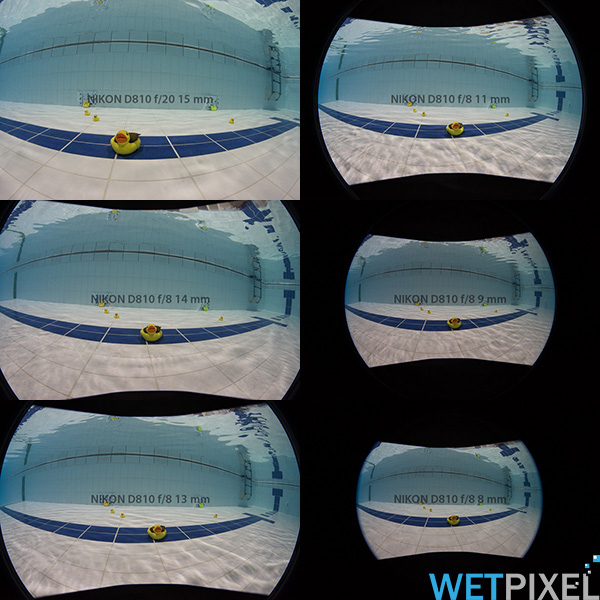
The use of full circle fisheye is very much a creative decision and is only available underwater with dome ports that have their shades removed. Saying that, for a Nikon FX shooter, the ability to shoot images like this gives options that are not available with other “normal” FX fisheye lenses.
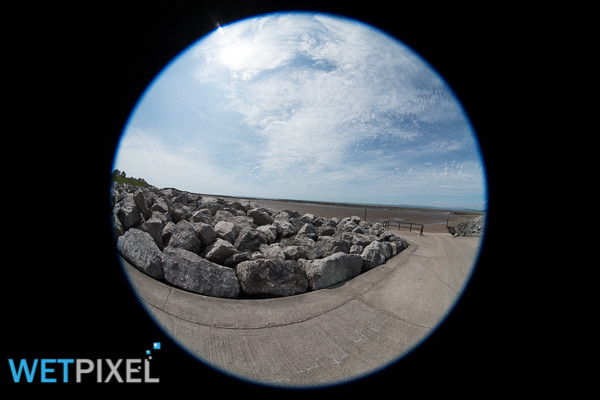
One issue that has been noted is that at 8mm, the lens produces a blue fringe on the edges of the circle. This occurs on the surface and underwater, so is likely to be a lens issue rather than a dome port one. This fringing can be corrected in post processing.
Nikon quotes a minimum working distance of 0.5 ft. (0.16 m) from focal plane at all zoom positions. This is relevant as the lens needs to be able to focus on the virtual image created by the dome, which exists 1.5 times the dome diameter (or 3 times the radius) away from it. For subjects that are closer than this, the lens will need to focus even closer. The test image were all taken with a 160 mm (6.3 in.) dome port so the virtual image exists around 240 mm (9.4 in.) from the lens’s entrance pupil.
As the following image show, the lens will focus on a subject placed on the actual dome port:
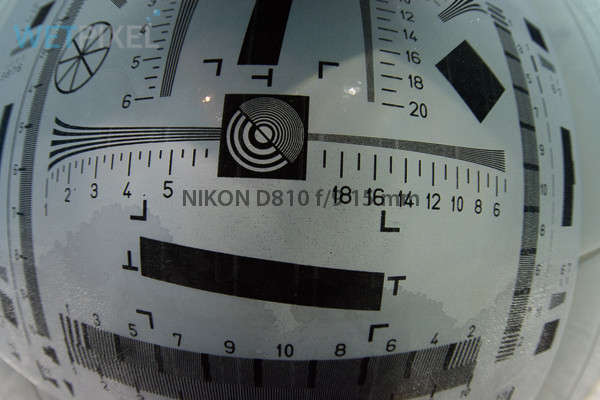
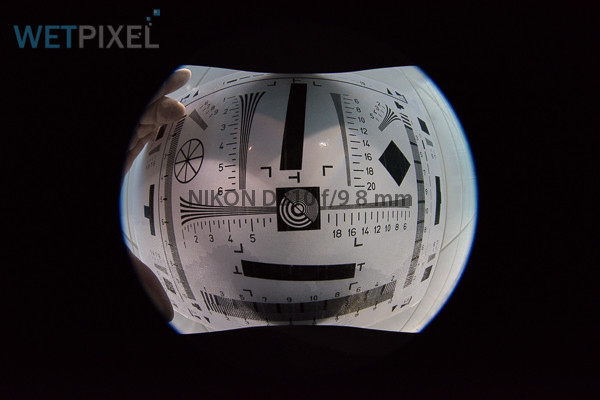
This is certainly considerable closer than the Nikon 16 mm f2.8.
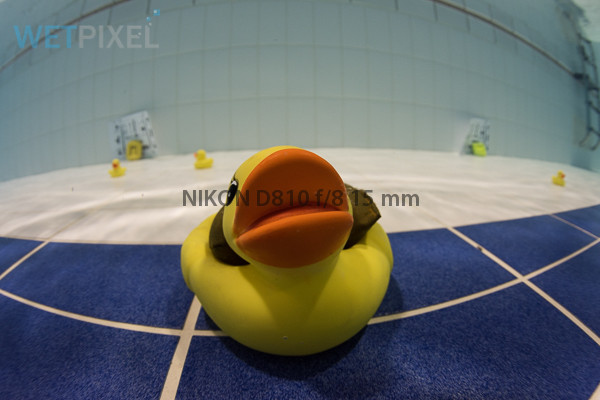
In terms of image quality and sharpness, the lens seems very good, even at small apertures. The following is a series of test shots are a variety of apertures, each with a 100% crop from the lower left hand corner of the image. It is important to stress that the resolution of the D810 tends to show the smallest blemishes at high magnification.
The images have not had any creative sharpening applied, but have had sharpening that has been automatically applied in the D810’s profile in Lightroom. Apertures are listed in the center of each image.
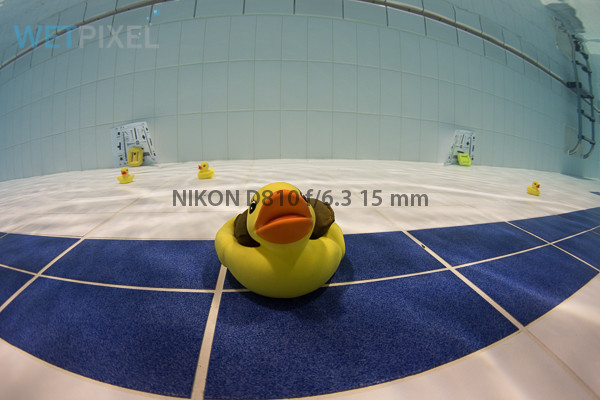
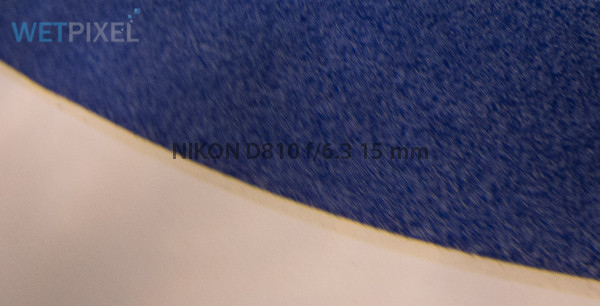
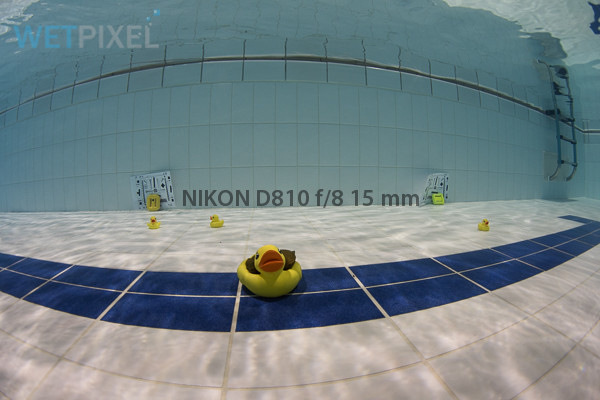
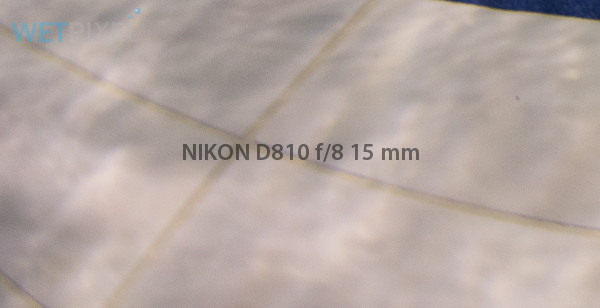
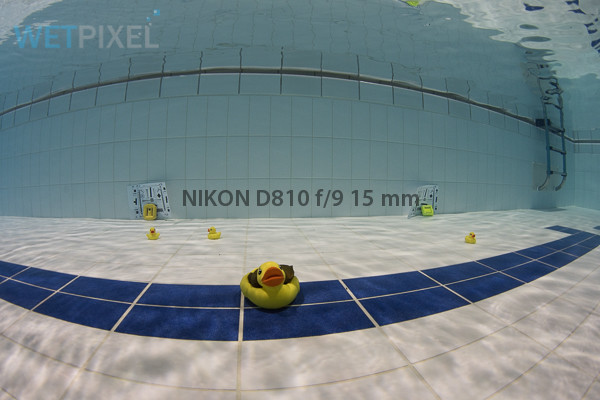
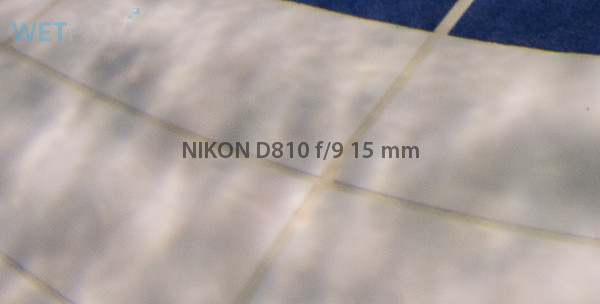
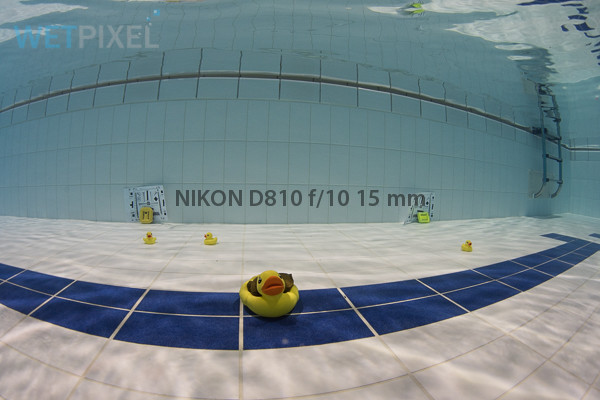
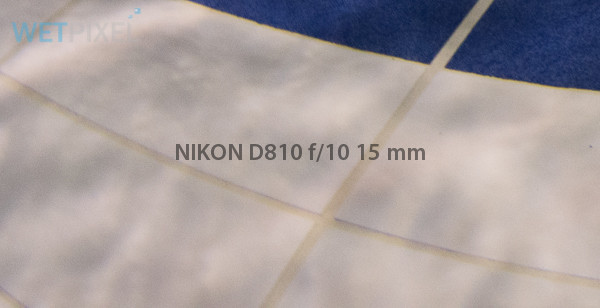
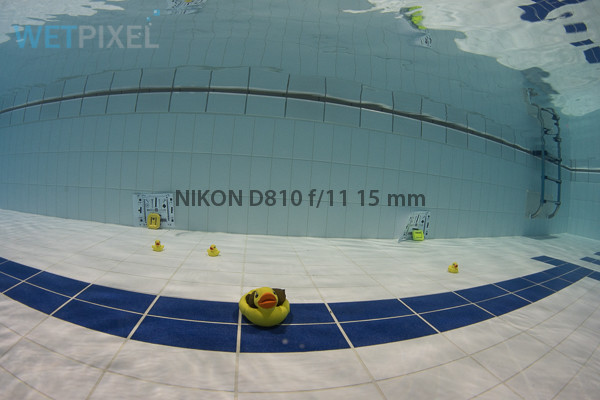
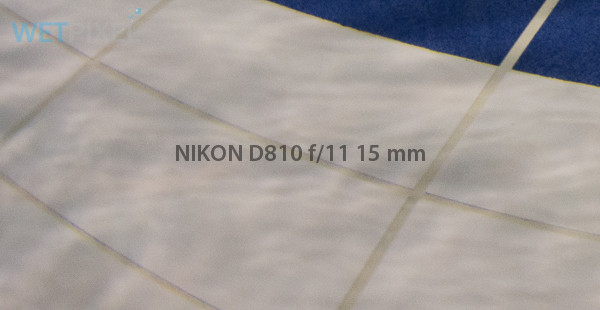
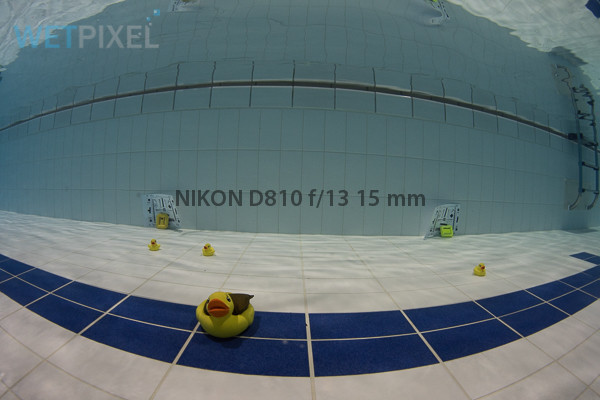
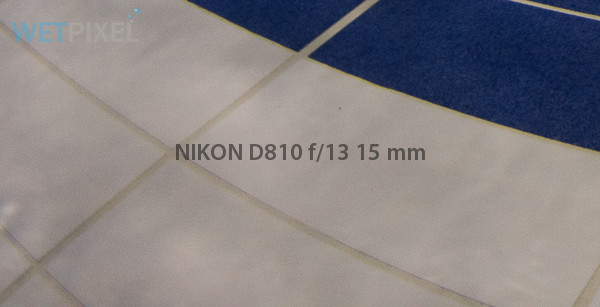
Image detail is very good, see the 100% crop of the lens target in the image below at f/8:
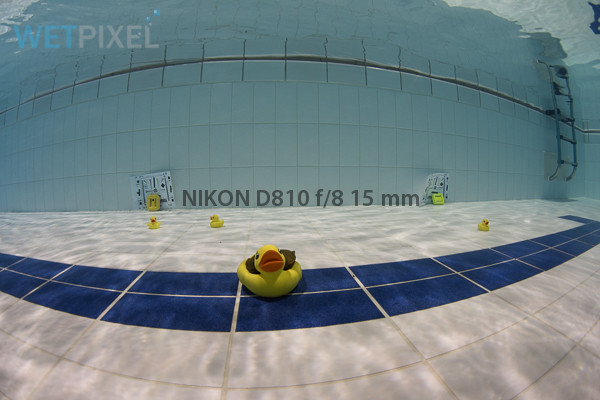
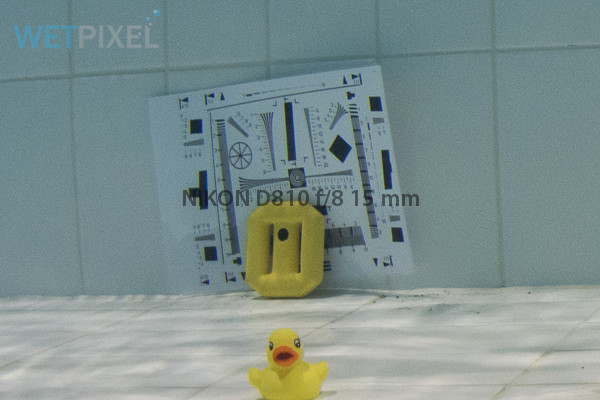
So far, tests for flaring and the ability to cope with sunbelts have been limited. In the testing carried out so far however, it seems a very competent performer, definitely better than the Sigma 15mm f2.8 fisheye. The D810 is already established as a very capable performer in situations with a large dynamic range, so it is good to see a lens with a performance that complements it.
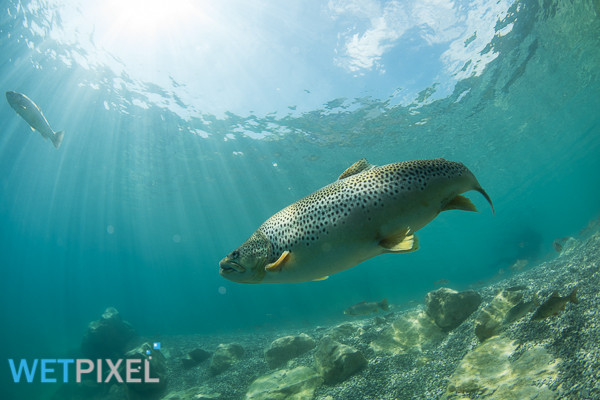
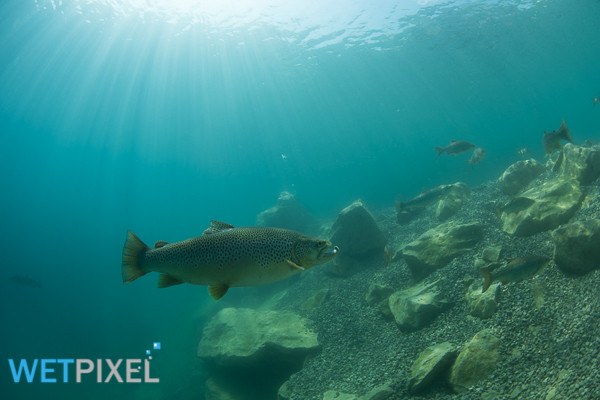
Page 1: Introduction.
Page 2: Nikon 8-15mm Red Sea Portfolio by Alex Mustard.
Page 3: The Nikon AF-S FISHEYE NIKKOR 8-15mm f/3.5-4.5E ED on FX cameras.
Page 4: The Nikon AF-S FISHEYE NIKKOR 8-15mm f/3.5-4.5E ED on DX cameras.
Page 5: The Nikon AF-S FISHEYE NIKKOR 8-15mm f/3.5-4.5E ED: Working Conclusions.